
Nel maggio del 1898 re Umberto I, preoccupato per le notizie che giungevano da Milano, dove era appena scoppiato uno sciopero generale, affidò al generale Bava Beccaris il compito di reprimere la sommossa. Ai soldati venne dato ordine di sparare a vista, e Bava Beccaris fece aprire il fuoco sulla città con i mortai. Il bilancio fu di 80 morti e 450 feriti. Fiero dell’impresa compiuta, il generale telegrafò al re che Milano era ormai “pacificata”. Il capo del governo, il marchese Di Rudini, fece sopprimere oltre cento giornali di opposizione, le Camere del Lavoro, i circoli socialisti, le Società di Mutuo Soccorso, nonché 70 comitati diocesiani e 2500 comitati parrocchiali. Furono inoltre chiuse le Università di Roma, Napoli, Padova e Bologna e vennero eseguiti migliaia di arresti. Più tardi, i tribunali distribuiranno 1400 anni di carcere. A Bava Beccaris, Umberto I inviò subito un telegramma di felicitazioni e la croce dell’Ordine Militare di Savoia «per i preziosi servigi resi alle istituzioni e alla civiltà». Due anni dopo, il 29 luglio 1900, l’anarchico pratese Gaetano Bresci sollevava re Umberto I dal peso delle proprie responsabilità, uccidendolo a Monza.
Il Re e l’anarchico. Entrambi assassini, con le mani sporche di sangue: è innegabile. Eppure, sono forse equiparabili? Non lo penso. Né penso che le motivazioni e le conseguenze delle loro rispettive azioni si possano considerare alla stessa stregua.
E allora, giacché essi non possono venir uniti in una comune esecrazione, quale dei due si può dire che commise un atto di terrorismo? Il re che fece massacrare la folla, o l’anarchico che sparò al re?
Domandarsi cosa sia il terrorismo è uno di quegli interrogativi che in apparenza è inutile porre perché destinati a una risposta univoca, ma che in realtà — se formulati in modo rigoroso — non mancano di suscitare reazioni sorprendenti. Le risposte infatti sono sempre varie e contraddittorie. «Terrorismo è la violenza di chi combatte lo Stato», diranno alcuni; «terrorismo è la violenza dello Stato», ribatteranno altri; «macché, terrorismo è qualsiasi atto di violenza politica da qualsiasi parte provenga», preciseranno altri ancora. Per non parlare delle dispute che si aprono di fronte alle ulteriori distinzioni che si possono fare al riguardo; ad esempio, il terrorismo è solo la violenza contro le persone o anche quella contro le cose? Deve possedere necessariamente una motivazione d’ordine politico? O si caratterizza solo per il panico che semina?
La molteplicità di significati assegnati a questo termine è sospetta. La sensazione in questo caso non è di trovarsi al cospetto dei soliti equivoci dovuti all’incapacità delle parole di esprimere una realtà la cui complessità trascende i simboli che vorrebbero rappresentarla. L’impressione al contrario è quella di trovarsi di fronte ad un confusionismo interessato, ad una relativizzazione di interpretazioni creata artificialmente con l’intento di svuotare le idee di ogni significato, di neutralizzarne la forza pratica, di banalizzare l’intera questione riducendo a chiacchiericcio ogni riflessione che si potrebbe fare in proposito. Eppure questa parola di dieci lettere avrà pure una sua origine, una sua storia, da cui è possibile ricavare un significato in grado di dissipare, se non tutti, almeno buona parte degli equivoci che oggi il suo uso ingenera. In effetti è così.
La prima definizione che viene assegnata a questo termine dalla gran parte dei dizionari è di carattere storico: «Il governo del Terrore in Francia». Sappiamo quindi con precisione l’origine del vocabolo. Terrorismo è il periodo della Rivoluzione Francese che va dall’aprile 1793 al luglio 1794, quando il Comitato di salute pubblica guidato da Robespierre e Saint-Just ordinò un alto numero di esecuzioni capitali. Il Terrore era quindi rappresentato da quella ghigliottina sotto la cui lama persero la testa migliaia di persone, che si presumeva costituissero una minaccia per la sicurezza del nuovo Stato in formazione. A partire da questa premessa, gli stessi dizionari giungono per estensione a una definizione di terrorismo più generale: «ogni metodo di governo fondato sul terrore».
Ora, questa prima interpretazione del concetto di terrorismo è estremamente chiara. Innanzitutto mette in luce lo stretto legame che intercorre fra terrorismo e Stato. Il terrorismo è nato con lo Stato, è esercitato dallo Stato, è appunto un «metodo di governo» che lo Stato impiega contro i suoi nemici per garantire la propria conservazione. «La ghigliottina — diceva Victor Hugo — è la concrezione della legge». Ed è solo lo Stato a poter promulgare la legge che, lungi dall’essere espressione di quel contratto sociale garante dell’armoniosa convivenza fra gli esseri umani, rappresenta il filo spinato con cui il potere protegge i propri privilegi. Chi osasse oltrepassarlo, dovrà fare i conti con le mani del boia. Comunque, già prima dell’aprile 1793 sul patibolo erano saliti alcuni cosiddetti criminali comuni e anche degli insorti. Checché se ne pensi, la ghigliottina non è affatto un’invenzione di monsieur Guilloton. Nella stessa Francia questo strumento di esecuzioni capitali aveva già una sua tradizione, ma nessuno ancora parlava di Terrore. Solo quando l’autorità dello Stato, in quel momento in mano ai giacobini, si vedrà minacciata dall’ondata rivoluzionaria, solo quando lo Stato dovrà fare i conti non con semplici fuorilegge o insorti isolati, ma con un enorme movimento sociale sul punto di travolgerlo, solo allora la violenza repressiva si chiamerà Terrore.
Ma, oltre alla sua natura istituzionale, esiste un’altra caratteristica che contraddistingue il terrorismo: chiunque ne può rimanere vittima. Durante il periodo del Terrore nella sola Parigi sarebbero avvenute circa 4.000 esecuzioni. Louis Blanc avrebbe ritrovato i documenti di 2750 ghigliottinati, scoprendo che solamente 650 di loro appartenevano a classi agiate. Ciò significa che la macchina statale della ghigliottina non faceva poi tante distinzioni, decapitando chiunque venisse ritenuto scomodo o sospetto. Ad aver perso la testa durante quelle giornate non sono stati solo i nobili, i militari e i preti — come vorrebbe la propaganda più conservatrice e tradizionalista — ma soprattutto semplici artigiani, contadini, poveri. Il terrorismo è tale perché colpisce alla cieca, da cui il sentimento di panico collettivo che esso ispira. L’uso indiscriminato della ghigliottina, sistematizzato dalla semplificazione delle procedure giudiziarie autorizzata dalla legge di Prastile, crea un effetto irreversibile di operazioni fatte in serie, annullando le differenze individuali fra tutti questi decapitati. Questa pratica dell’amalgama ha un significato politico preciso: raggruppando in una stessa seduta persone sospettate di “crimini” di natura o di entità assai differenti, il Terrore mira ad annientare le diversità individuali a vantaggio del consenso popolare, e a distruggere «l’abiezione dell’io personale» (Robespierre), giacché deve esistere una sola entità nella quale fondere gli individui: lo Stato.
Il terrorismo è nato quindi come strumento istituzionale e indiscriminato. Entrambi questi due aspetti riecheggiano anche in espressioni di uso corrente come, ad esempio, «bombardamenti terroristici». Un bombardamento, infatti, non solo avviene nel corso di una guerra condotta fra Stati, ma semina terrore e morte in tutta la popolazione. Lo stesso discorso si potrebbe fare per quanto riguarda il terrorismo psicologico, che viene considerato una «forma intimidatoria o ricattatoria di manipolazione dell’opinione pubblica, attuata soprattutto attraverso i mezzi di comunicazione con l’esagerare i pericoli di certe situazioni o addirittura inventandoli, allo scopo d’indurre le masse a determinati comportamenti sul piano politico, sociale, economico». Si vede bene come solo chi detiene il potere sia in grado di manipolare i grandi mezzi di comunicazione e, attraverso essi, il comportamento delle “masse” al fine di raggiungere i propri scopi.
Dunque, il terrorismo è la violenza cieca dello Stato. L’origine del termine lo dimostra in maniera inequivocabile. Ma il linguaggio non è mai espressione neutra. Lungi dall’essere meramente descrittivo, il linguaggio è anzitutto un codice. Il senso delle parole indica sempre la direzione verso cui sta pendendo la bilancia del dominio. Chi detiene il potere detiene anche il significato delle parole. Ciò spiega come mai con il passare del tempo il concetto di terrorismo abbia assunto un nuovo significato, che se contraddice completamente la sua genesi storica corrisponde però alle esigenze del dominio. Oggi con questo termine viene indicato un «metodo di lotta politica, basato su violenze intimidatorie (uccisioni, sabotaggi, attentati dinamitardi, ecc), impiegato in genere da gruppi rivoluzionari o sovversivi (di sinistra o di destra)». Come si vede, questa interpretazione, che cominciò a diffondersi fin dall’Ottocento, si contrappone completamente a quanto detto finora. Nella accezione originaria del termine è lo Stato a ricorrere al terrorismo contro i suoi nemici; nella seconda, sono i suoi nemici che impiegano il terrorismo contro lo Stato. Il capovolgimento di senso non potrebbe essere più esplicativo. L’utilità per la Ragion di Stato di una simile operazione è fin troppo palese. Ma come nasce la mistificazione? Il Terrore in Francia fu opera di uno Stato nato durante una Rivoluzione. Per giustificare il significato attuale del concetto di terrorismo, l’ideologia dominante ha dovuto scambiare i soggetti e attribuire alla Rivoluzione quella responsabilità che in realtà apparteneva allo Stato. Così, oggi ci viene insegnato che il Terrore è opera della Rivoluzione che, in quel lontano contesto storico, si era incarnata in uno Stato. Il Terrore sarebbe quindi sinonimo di violenza rivoluzionaria. Un salto acrobatico della logica che continua a incantare le platee degli spettatori di tutto il mondo, i quali sembrano non accorgersi della truffa pur evidente.
In realtà non si può attribuire il Terrore alla Rivoluzione, al popolo sollevato, giacché è solo quando la Rivoluzione si è fatta Stato che esso è apparso. È una clamorosa menzogna ideologica, nonché un grossolano falso storico, fare del Terrore l’espressione stessa della violenza rivoluzionaria “massacrante”, quella della strada, delle giornate sulle barricate, della vendetta popolare. Prima del 17 aprile 1793 (giorno della fondazione del tribunale rivoluzionario) la violenza esercitata contro il potere, anche quella espressa con forme particolarmente crude, non aveva mai assunto il nome di terrorismo. Né le cruente jacqueries del XIV secolo, né gli eccessi avvenuti durante la Grande Rivoluzione — come ad esempio il corteo delle donne di Marsiglia che portano in giro, in cima a un bastone, le viscere del maggiore De Beausset al grido di «Chi vuole frattaglie?» — sono stati considerati atti di terrorismo. Termine con cui è stata indicata soltanto la violenza repressiva dell’apparato statale nel momento in cui si doveva difendere — per la prima volta nella storia — da un assalto rivoluzionario. Insomma, l’origine storica del termine dimostra come il terrorismo sia la violenza del potere che si difende dalla Rivoluzione, non quella della Rivoluzione che attacca il potere.
Bisogna dire, a questo proposito, che ad incoraggiare la persistenza di questo equivoco hanno contribuito a lungo anche gli stessi rivoluzionari che hanno accettato di buon grado questo appellativo, senza accorgersi che così facendo aiutavano la propaganda di quello Stato che intendevano colpire. E se il concetto di terrorismo può trovare legittimamente spazio in un contesto autoritario della rivoluzione (come dimostrato in Russia da Lenin e Stalin), esso è assolutamente privo di significato, per non dire aberrante, in una prospettiva di liberazione antiautoritaria. Non a caso furono proprio gli anarchici i primi a rivedere l’uso improprio di questo termine, spinti forse anche dagli avvenimenti. Nel 1921 ci fu il tragico attentato al cinema-teatro Diana di Milano che causò la morte e il ferimento di numerosi spettatori, pur avendo come obiettivo il questore della città reo di tenere in prigione alcuni noti anarchici. Malgrado le intenzioni dei suoi autori, un atto di terrorismo. Com’era immaginabile, questo fatto provocò aspre discussioni all’interno del movimento anarchico. Così, di fronte alla condanna del gesto da parte di numerosi anarchici, la rivista Anarchismo di Pisa, senz’altro la pubblicazione più diffusa dell’anarchismo autonomo in Italia, se da un lato continuava a difendere «questa verità anarchica cardinale; cioè dell’inscindibilità del terrorismo dall’insurrezionismo» dall’altro cominciava ad abbozzare le prime riflessioni critiche sul concetto di terrorismo: «O perché mai chiamare e bollar di “terrore catastrofico” — che è proprio dello Stato — l’atto di rivolta individuale? Lo Stato è terrorista, il rivoluzionario che insorge, mai!». Mezzo secolo più tardi, in un contesto di forti tensioni sociali, questa critica verrà ripresa e sviluppata da chi non intende accettare l’accusa di terrorismo lanciata dallo Stato contro i suoi nemici.
Le parole sono sempre state oggetto di evoluzione di significato. Non desta sorpresa che anche il senso del termine terrorismo si sia modificato. Tuttavia non è accettabile che esso contraddica entrambe le sue due caratteristiche originarie, che sono quelle della istituzionalità e della indiscriminazione della violenza. Questa violenza può essere esercitata contro le persone o contro le cose, può essere fisica o psicologica, ma perché si possa parlare di terrorismo bisogna che almeno una di queste due caratteristiche permanga. Ad esempio, si è giustamente parlato di terrorismo per indicare le azioni contro i militanti dell’Eta condotte dagli squadroni della morte dello Stato spagnolo. Queste azioni erano sì indirizzate contro un obiettivo preciso, ma si trattava comunque di una forma di violenza istituzionale contro una minaccia considerata rivoluzionaria. Allo stesso modo, il terrorismo può anche non essere sempre opera delle istituzioni. Ma perché si possa considerare tale, le sue manifestazioni devono colpire in maniera indiscriminata. Una bomba in una stazione ferroviaria, o all’interno di un supermercato aperto, o su una spiaggia affollata: questo si può a ragione definire terrorismo. Anche quando è frutto del delirio di un folle, anche quando viene rivendicata da un’organizzazione rivoluzionaria, il risultato di una simile azione è seminare il panico fra la popolazione.
Quando invece la violenza non è istituzionale e non è indiscriminata, non ha senso parlare di terrorismo. Il singolo individuo che in preda a un raptus di follia stermina la famiglia non è un terrorista. E non lo è neppure il rivoluzionario, o l’organizzazione sovversiva, che sceglie con cura gli obiettivi delle proprie azioni. Quest’ultima è sì violenza, violenza rivoluzionaria, non terrorismo. Non mira a difendere lo Stato, né a seminare terrore fra la popolazione. Se in occasione di simili attentati l’Informazione suole parlare di “psicosi collettiva” o di “intere nazioni che tremano”, è solo in omaggio alla vecchia menzogna che vuole identificare l’intero paese con i suoi rappresentanti (per meglio giustificare il perseguimento di interessi privati dei pochi in nome e a scapito di quelli sociali dei molti). Se qualcuno dovesse cominciare ad uccidere politici, industriali e magistrati, ciò seminerebbe terrore solo fra i politici, gli industriali e i magistrati. Nessun altro ne sarebbe materialmente toccato. Ma se qualcuno ponesse una bomba su un qualsiasi treno, chiunque potrebbe esserne vittima, senza esclusioni: il politico come il nemico della politica, l’industriale come l’operaio, il magistrato come il pregiudicato. Nel primo caso siamo di fronte a un esempio di violenza rivoluzionaria, nel secondo si tratta invece di terrorismo. E per quante obiezioni, critiche e perplessità si possano sollevare sul conto della prima forma di violenza, non la si può certo equiparare alla seconda.
Detto questo, torniamo al quesito iniziale. Fra il re che fece massacrare la folla e l’anarchico che sparò sul re, chi è il terrorista?
Mare Almani
[Diavolo in corpo, n. 3, novembre 2000]
Finimondo
http://finimondo.org/node/584
http://www.non-fides.fr/?Che-cos-e-il-terrorismo
What is terrorism?
In May 1898, king Umberto I, worried about the news reaching him from Milan where a general strike had broken out, entrusted general Bava Beccaris with the task of repressing the revolt. The order is given to the soldiers to shoot at sight, and Bava Beccaris opens fire on the town with canon shot. The balance is 80 dead and 450 wounded. Proud of having done his duty, the general telegraphs the king that Milan is now ‘pacified’. The head of the government, the marquis Di Rudini, prohibits over one hundred opposition newspapers, the Bourses de Travail, socialist circles, Mutual Societies, and also at least 70 diocesain committees and 2,500 parish committees. Moreover, the universities of Rome, Naples, Padova and Bologne are closed, while thousands of arrests are made. Umberto I immediately sends a telegramme of congratulations to Bava Beccaris and decorates him with the cross of the Military Order of Savoy ‘for precious services rendered to the institutions and civilisation’. Two years later, on July 29 1800, the anarchist Gaetano Bresci relieves king Umberto I of the weight of his responsibilities by killing him in Monza. The King and the anarchist. Two assassins, their hands stained with blood, that’s undeniable. Yet, can one put them on the same level?I don’t think so, any more than one can consider the motivations and consequences of their acts in the same way. And so, because they can’t be united in a common execration, which of the two committed an act of terrorism? The king who had the crowd massacred, or the anarchist that slayed the king?
To ask oneself what is terrorism is one of those questions that it would seem pointless to ask, because it is destined to get a univoque answer. In reality - when it is formulated rigorously - it doesn’t fail to give rise to surprising reactions. The answers are actually different and contradictory. ‘Terrorism is the violence of those that fight the State’, some say, ‘Terrorism is the violence of the State’, others answer, ‘but no, terrorism is any act of political violence, no matter where it comes from’, the last point out. And all the debates that open up in the face of the distinctions that can then be made on the subject: for example, terrorism is only violence against people or can also be against things? Must it necessarily have a political motivation or is it only characterised by the panic is seminates? The multiplicity of meanings assigned to this term is suspect. The sensation here is not of finding oneself in the presence of the usual malcomprehensions linked to the incapacity of words to express a reality whose complexity goes beyond the symbols that would like to represent it. On the contrary, one gets the impression that one is face to face with deliberate confusion, a relativism of interpretations created artificially with the intention of emptying ideas of their meaning, or neutralising practical strength, banalising the whole question by reducing all reflection that one might carry out on the subject to chatter.
All the same, this nine-letter word must have an origin, a history, from which it would be possible to deduct a meaning capable of dissipating at least a good part of the ambiguities that its use generates today. And that is in fact so.
The first definition that is given of this term by most dictionaries is of an historical character: ‘the government of terror in France’. One thereby discovers the precise origin of the word. Terrorism corresponds to the period of the French Revolution that goes from April 1793 to July 1794, when the Committe of public health led by Robespierre and Saint-Just ordered a huge number of capital executions. The terror was therefore represented by the guillotine whose blade cut the head off thousands of people who, one presumes, constituted a threat for the security of the new State in formation. Starting off from this base, the same dictionaries add by extension a more general definition of terrorism: ‘all methods of government based on terror’.
At the present time this interpretation of the concept of terrorism is extremely clear. First of all, it highlights the narrow line that exists between terrorism and the State. Terrorism is born with the State, is exercised by the State, is precisely a ‘method of government’ that the State uses against its enemies to guarantee its own conservation. ‘The guillotine - said Victor Hugo - is the concretisation of law’. Only the State can promulgate laws. And law, far from being the expression of this social contract garantor of harmonious cohabitation among humans, represents the barbed wire with which power protects its privileges.Whoever dares to go beyond it will have to pass through the hands of the hangman. In fact, before the month of April 1793, some so-called common law criminals and some insurgents had already climbed the scaffold.
Whatever one might think, the guillotine is not actually an invention of monsieur Guillotin. In France this instrument of capital execution already had a history, but nobody had talked about Terror yet.It is only when the authority of the State, then in the hands of the jacobins, is threatened by a revolutionary wave, when it is no longer a question of simple outlaws or isolated insurgents, but a huge social movement capable of overthrowing it, only then does repressive violence come to be called terror’.
But, apart from its institutional character, another characteristic distinguishes terrorism: anyone can become a victim of it. During the period of the Terror there were no fewer than 4,000 executions in Paris alone. Louis Blanc found the identity of 2,750 guillotined people, discovering that only 650 of them belonged to the wealthy classes. That means that the State machine of the guillotine did not make many distinctions, decapitating anyone it considered a nuisance or suspect. It was not only noblemen, military men and priests that lost their heads these days - as the most conservative and traditional propaganda would have it - but above all simple artisans, peasants, poor people. Terrorism is such because it strikes blindly, hence the feeling of collective panic it inspires. The indiscriminate use of the guillotine, systemised thanks to the simplification of judicial procedures consented by the law of Prairial, created the ineluctable effect of chain operations, annuling the individual differences between all the decapitated. This practise of amalgam has a precise political sense: regrouping into one single seance the people suspected of ‘crimes’ of a nature or identity that were completely different. Terror aims at eliminating individual differences to create popular consensus, and to destroy ‘the abjection of the personal me’ (Robespierre), given that there must only exist one single entity into which to melt individuals: the State. Terrorism is therefore born as an institutional and indiscriminate instrument. These two aspects also retentissent in current expressions, as for example ‘terrorising bombardments’. Not only does bombardment take place during wars carried out by States, it seminates death and desolation among the whole population. One could say the same thing concerning the psychological terrorism considered ‘a form of intimidation or blackmail’ in order to manipulate public opinion, effectuated above all through the means of communication, by the exaggeration of the dangers of certain situations or even inventing them, in order to induce the masses to behave in a certain way in political, social and economic projects. One can see clearly how only those who hold power are able to manipulate the great means of communication and, through them, the ‘masses’, in order to reach their aim.
Terrorism is therefore the blind violence of the State, as the origin of the term shows clearly. But language is never a neutral expression. Far from being merely descriptive, language is above all a code. The meaning of words always points to the side on which the balance of power is leaning. He who holds power also possesses the meaning of words. That explains how it is that, over time, the concept of terrorism has taken on a new meaning that completely contradicts its historical origins but corresponds to the needs of power. Today, this concept is defined ‘a method of political struggle based on intimidatory violence (murder, sabotage, explosive attacks, etc.) generally used by revolutionary groups or subversives (left or right)’. As we can see, this interpretation, which began to spread at the end of the 19th century, is in complete opposition to what has been said until now.In the initial acceptation of the word, it is the State that has recourse to terrorism against its enemies; in the second, it is its enemies that use terrorism against the State.The upturning of meaning could not be more explicit. The usefulness of such an operation for the Reason of State is only too clthe Terror in France was the work of a state born from the Revolution.To justifythe present meaning of the concept of terrorism, the dominant ideology has had to intervertire its subjects and attribute to the Revolution the responsibility that in reality belongs to the State. Ainsi, we are taught today that Terror is the work of the Revolution which, in this far off historical context, took the form of the State. Terror is therefore synonymous with revolutionary violence. An acrobatic jump in logic that continues to enchant the parterres of spectators the world over, who don’t seem to realise de l’arnaque more than obvious.
In reality, one cannot attribute Terror to the Revolution, the insurgent people, because it is only when the Revolution becomes a state that the Terror has appeared. It is an enormous ideological lie and a gross historical error to make Terror the very expression of ‘massacrante’ revolutionary violence, that in the streets, ythe days on the barricades, of popular vengeance. Before April 17 1793 (day of the foundatio of the revolutionarytribunal), the violence exercised against power, even that which was particularly cruel, had never recouvert the name of terrorism. Neither the bloody Jacqueries of the XIV century, nor the excesses that deroule during the Great Revolution (such as for example the demonstratio of the women of Marseille who carried a la ronde, on top of a pike, the visceres of Major De Beausset to the sound of ‘who’s for tripe?’) were ever considered as acts of terrorism.This term indicates only the repressive violence of the State apparutus at the moment in which it has to defend itself - for the first time in history - from a revolutionary assault. En somme, the historic aspect of the term shows how terrorism is violence of power that defends itself from the Revolution, not Revolution attacking power.
What a social monstruosity, what chef d’oeuvre of Machiavelism is this revolutionary government! For any being that reasons, government and revolution are incompatible.
Jean Varlet, Gare l’explosion, 15 vendemaire an III.
It should be said a ce propos that the persistence of this ambiguity has been encouraged for a long time by the revolutionaries themselves, who have accepted this qualificativ de bon gres, without realising that in so doing they were helping the propaganda of the very State that they wanted to strike. And if the concept of terrorism can legitimately find its place in an authoritarian concept of revolution (as Lenin and Stalin demonstrated in Russia), it is absolutely devoid of sense, not to say abhorrant, in an anti-authoritarian perspective of liberation. It is not by chance thast it is precisely the anarchists to have in first revu the improper use of this term, perhaps pushed by events. In 1921 the tragic attentat took place against the cinema-theatre Diana in Milan, causing the death and wounding of numerous spectators, although it had the objective the town prefect who was responsible for the imprisonment of some well-known anarchists. In spite of the authors’ intentions, it was an act of terrorism. As one can imagine, this act has led to many arguments within the anarchist movement. Ainsi, in the face of the condemnation of the gesture by many anarchists, both the revue Anarchisme of Pisa, undoubtedly the most widely distributed publication of autonomous anarchism in Italy, continued to defend ‘this cardinal anarchist truth, of knowing the impossibility of separating terrorism from insurrectionalism’, it began on the other hand to esquisser the first critical reflections on the concept of terrorism: ‘why name and tax with ‘catastrophic terror’ - which is the propre of the State - the act of individual revolt? The State is terrorist, the revolutionary who insurges, never!’ Half a century later, within a context of strong social tension, this critique was to be taken up again and developed by those who did not intend to accept the accusation of terrorism launched by the state against its enemies.
Words have always been subject to an evolution in meaning. It is not surprising that the meaning of the term terrorism has also been modified. It is all the same unacceptable that it contradict each one of its original characteristics, which are those of the institutional and indiscriminate aspectof violence. This violence can be exercised against people or against things, it can be physical or psychological, but in order to be able to speak of terrorism, there must be at least one of these two characteristics remains. For example, one has rightly spoken of terrorism to indicate actions carried out by death squads of the Spanish State against the militants of ETA. These actions were directed against a precise objective, but it was all the same a question of a form of institutional violence against a threat considered as revolutionary. In the same way terrorism can not always be carried out by institutions. But in order for us to consider it such, its manifestations must then strike in an indiscriminate way. A bomb in a station or an open supermarket or on a crowded beach can rightly be defined terrorist. Even when it is fruit of the delirium of a ‘madman’ or when it is claimed by a revolutionary orga nisation, the result of such an action is to seminate panic in the population.
When on the other hand violence is neither institutional nor indiscriminate, it is a non-sense to speak of terrorism. An individual that exterminates his family in prey of a crisis of madness is not a terrorist. Any more than a revolutionary or a subversive organisation that choses its objectives with care. Of course there is violence, revolutionary violence, but not terrorism. It is aimed neither a defending the State nor at seminating terror in the population. If, during such attacks, the media talk of ‘collective psychosis’ or ‘whole nations trembling in fear’, it is merely in reference to the old lie that wants to identify a whole country with its representatives, in order to better justify the pursuit of the private interests of some in the name and at the cost of the social interests of all the others. If someone were to start to kill politicians, industrialists and magistrates, that would merely seminate terror among politicians, industrialists and magistrates. Nobody else would be materially touched. But if someone were to put a bomb in a train, anyone could be a victim, without exclusion: the politician just like the enemy of politics, the industrialist just like the worker, the magistrate just like the repris de justice. In the first case we are faced with an example of revolutionary violence, in the second it is a question of terrorism on the other hand. And in spite of all objections, critiques and perplexities that the first form of violence can raise, one certainly cannot compare it to the second.
That said, we come back to the initial question. Between the king who has the crowd massacred and the anarchist that shoots the king, who is the terrorist?
Mare Almani
http://www.non-fides.fr/?What-is-terrorism


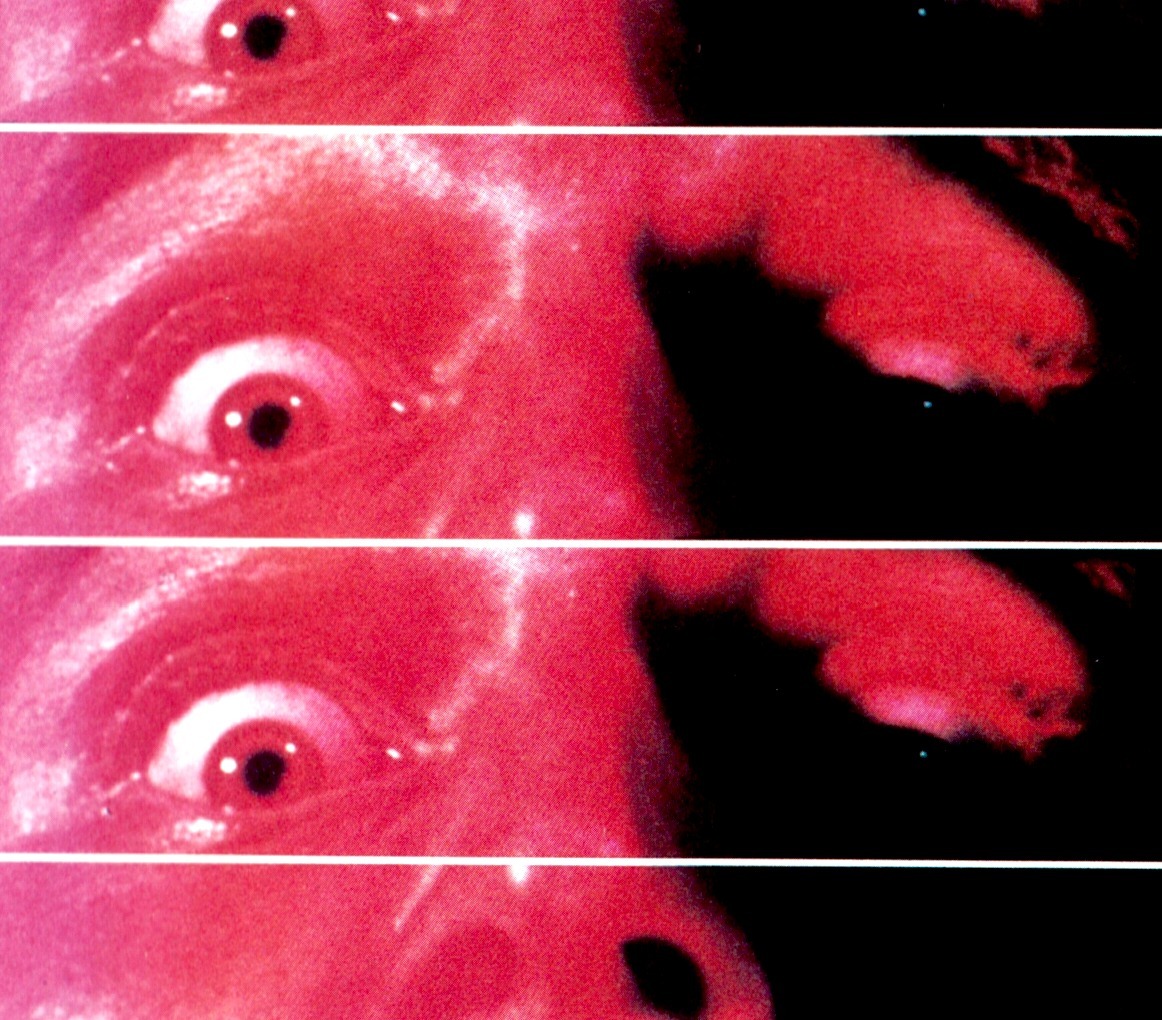
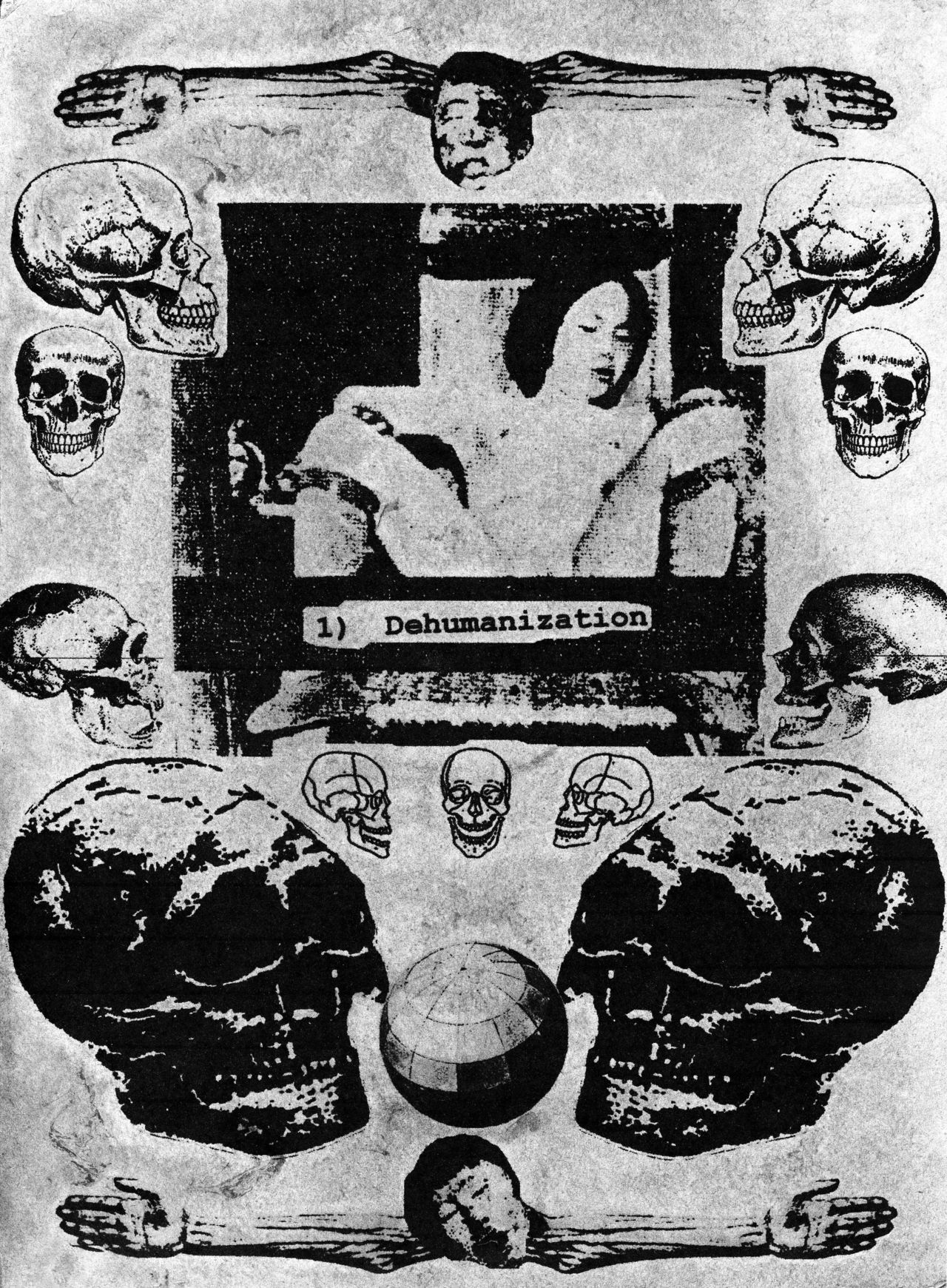


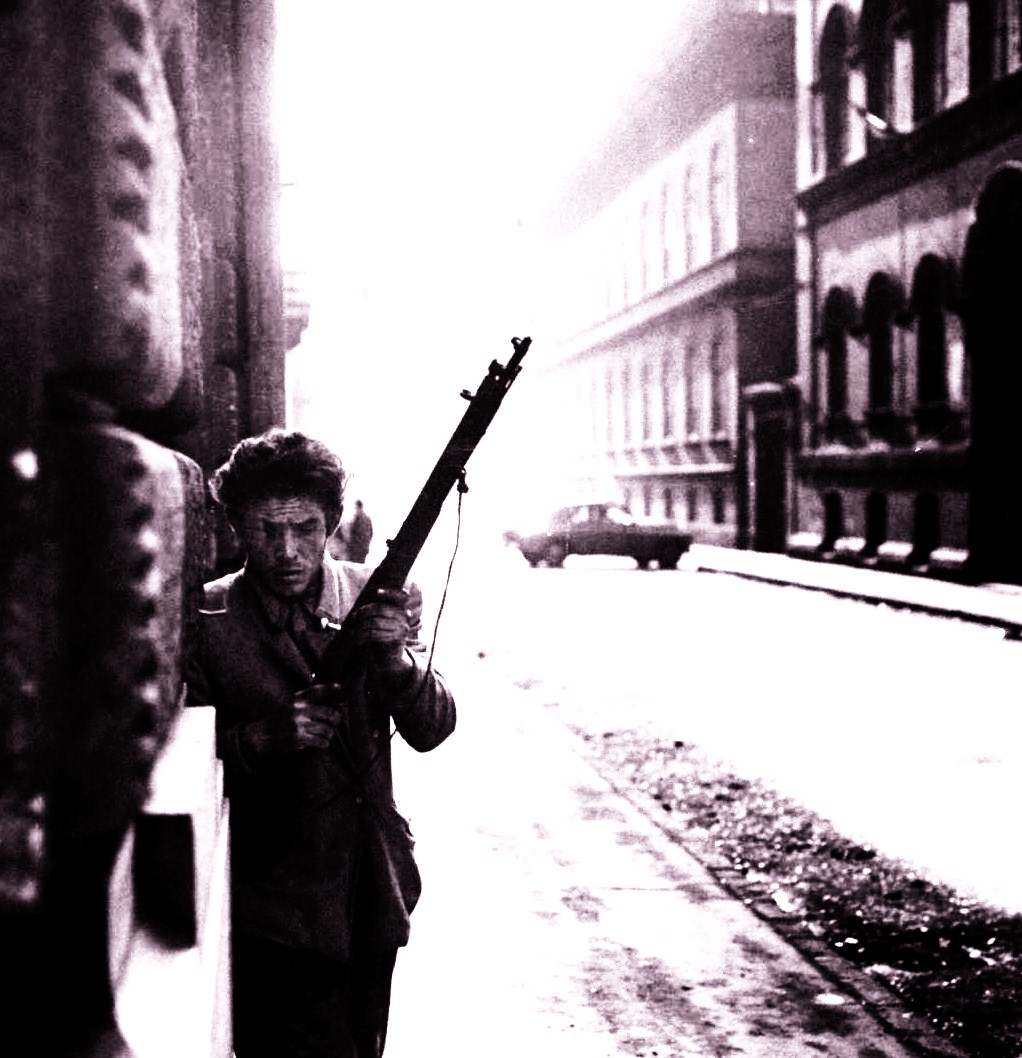
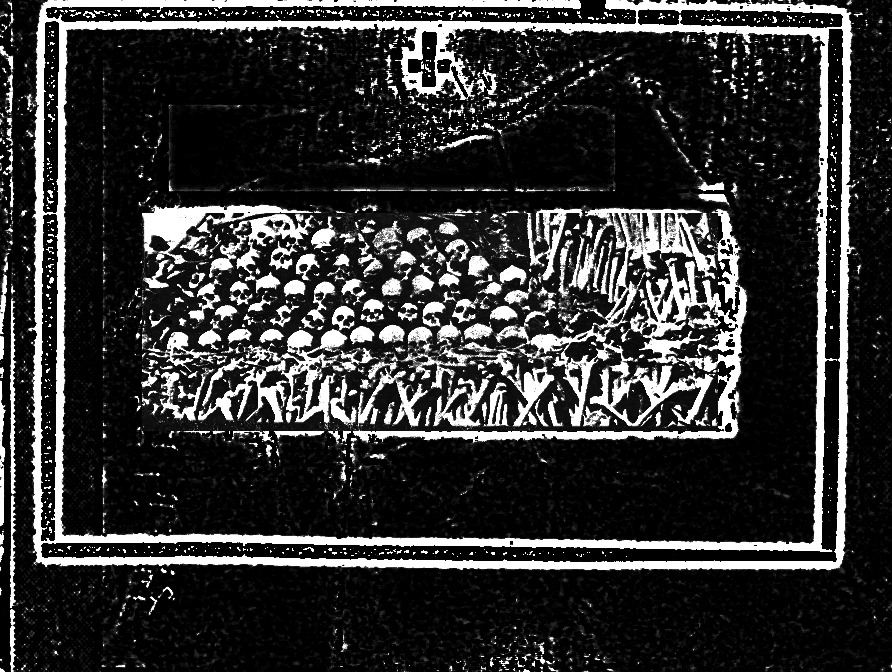
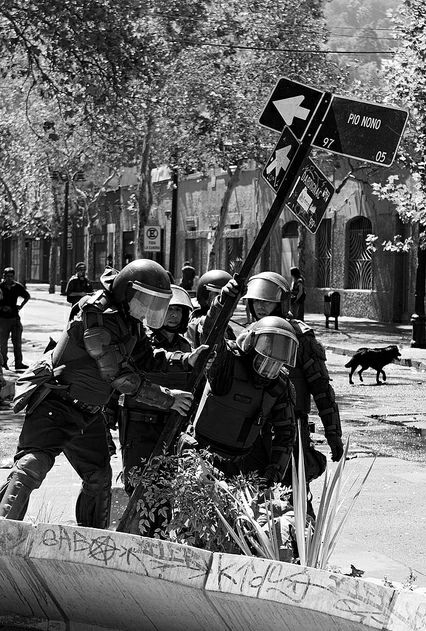
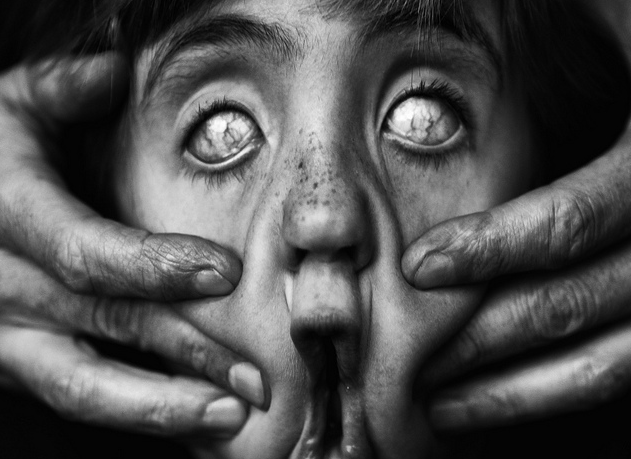

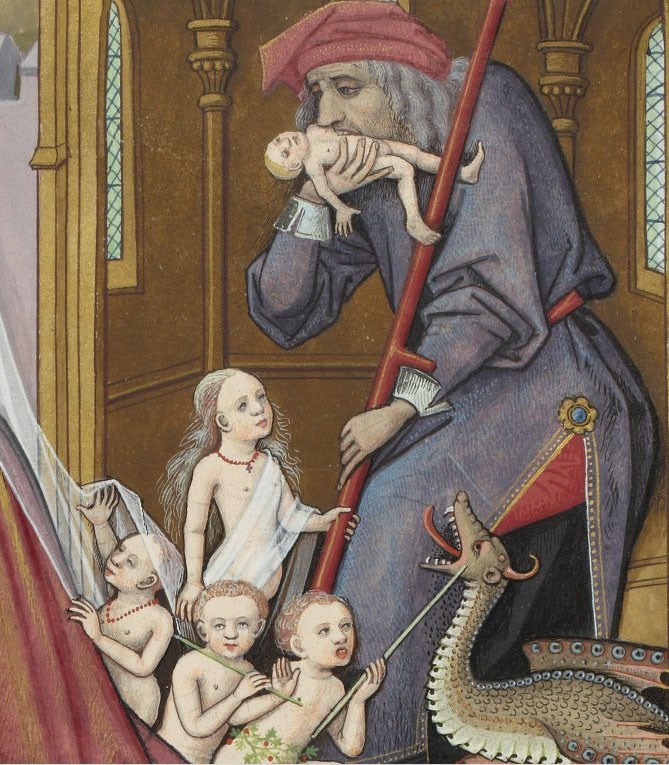
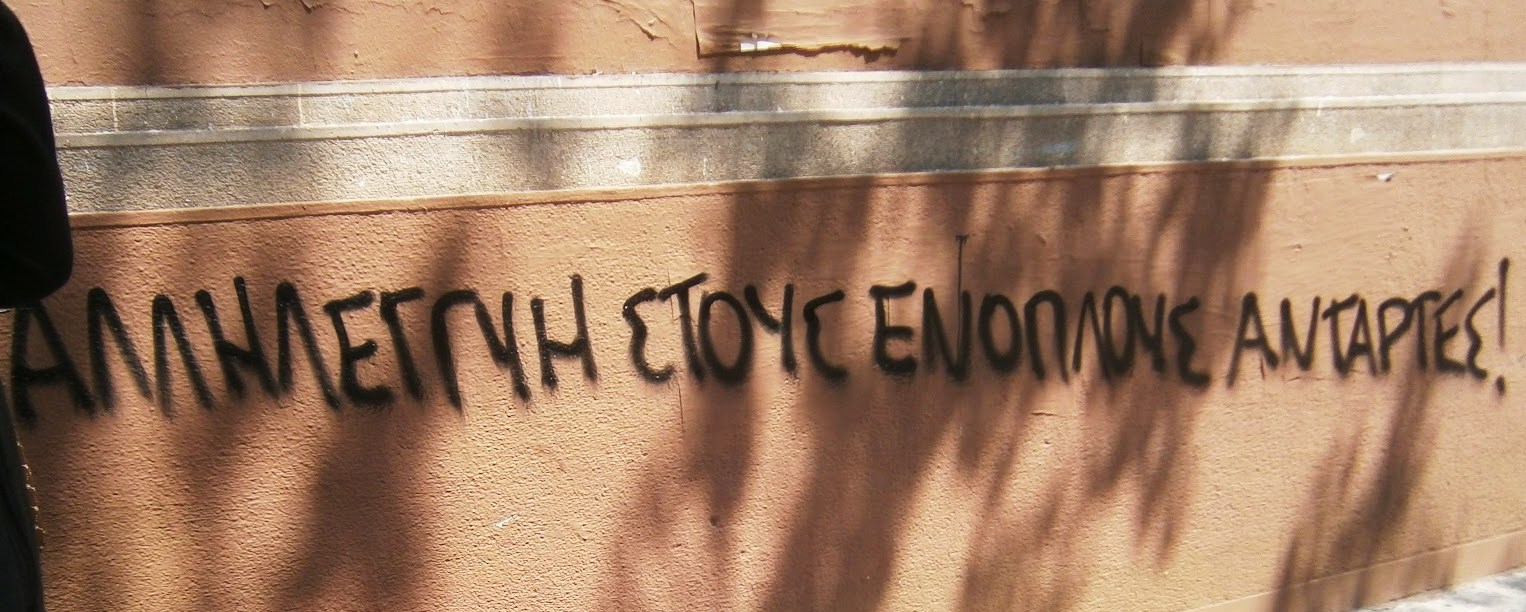

![Eurorepressione - Sulla conferenza a Den Haag sul tema "Anarchia" [corretto]](http://25.media.tumblr.com/tumblr_m0jvngOXtY1qa2163o1_1280.jpg)
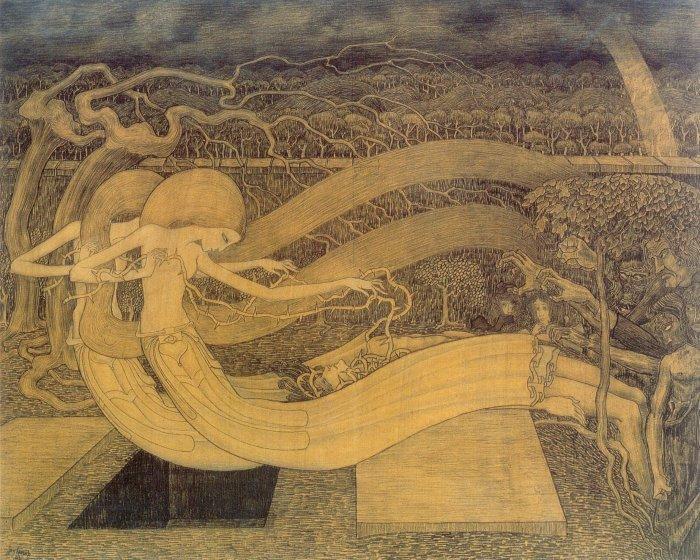
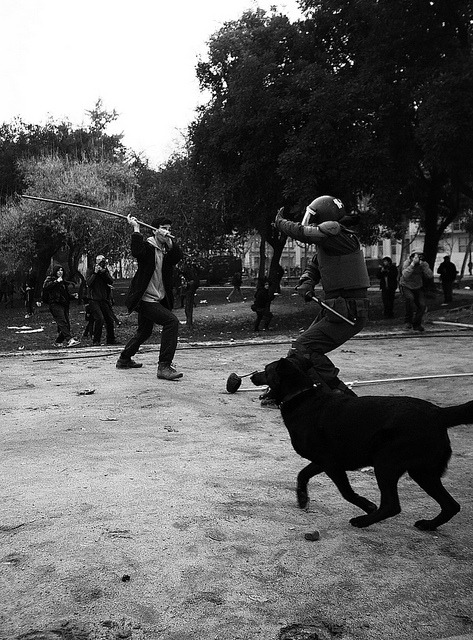
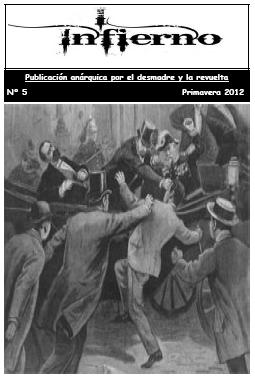
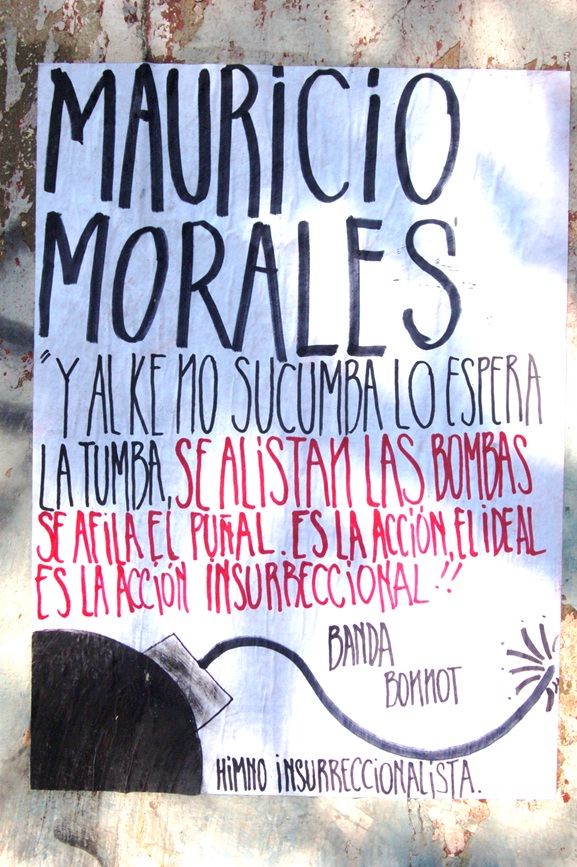
![A tres años de la Partida de Mauricio Morales: De la Memoria a la Calle [Stgo.]](http://metiendoruido.com/wp-content/uploads/2012/05/mmacividad.jpg)

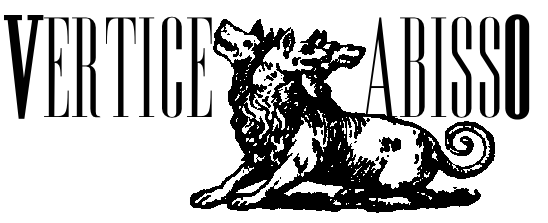


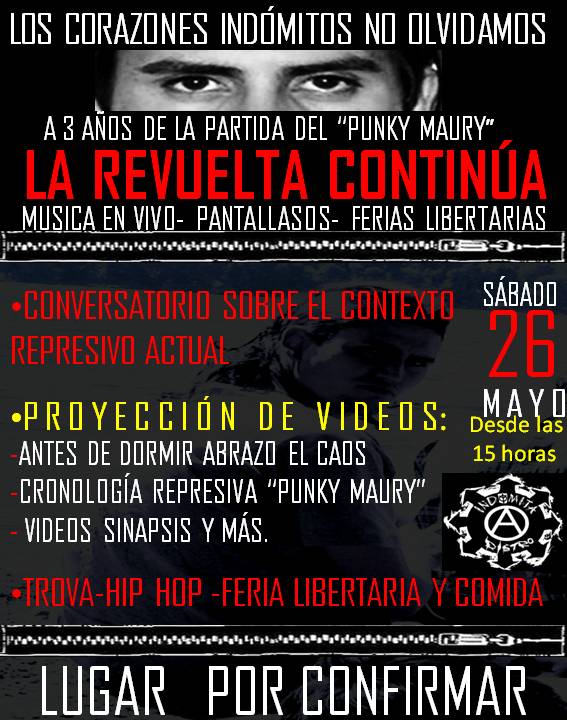
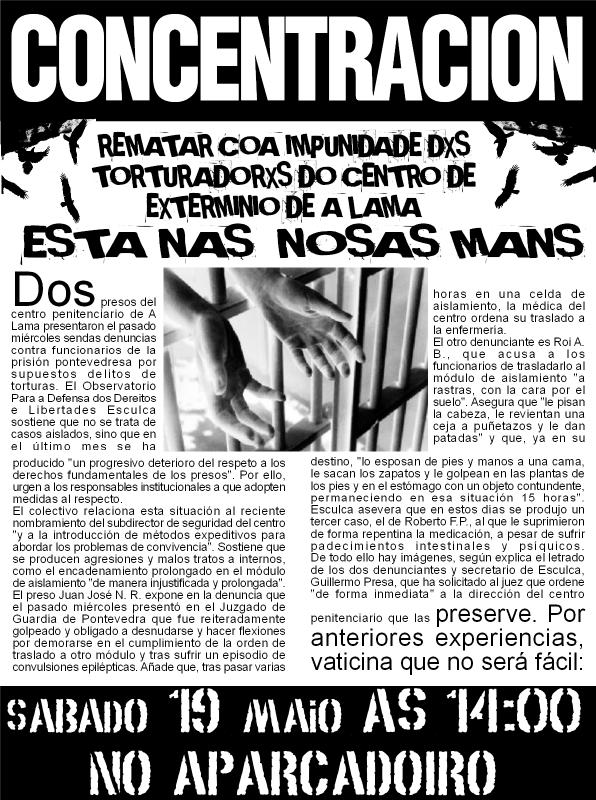

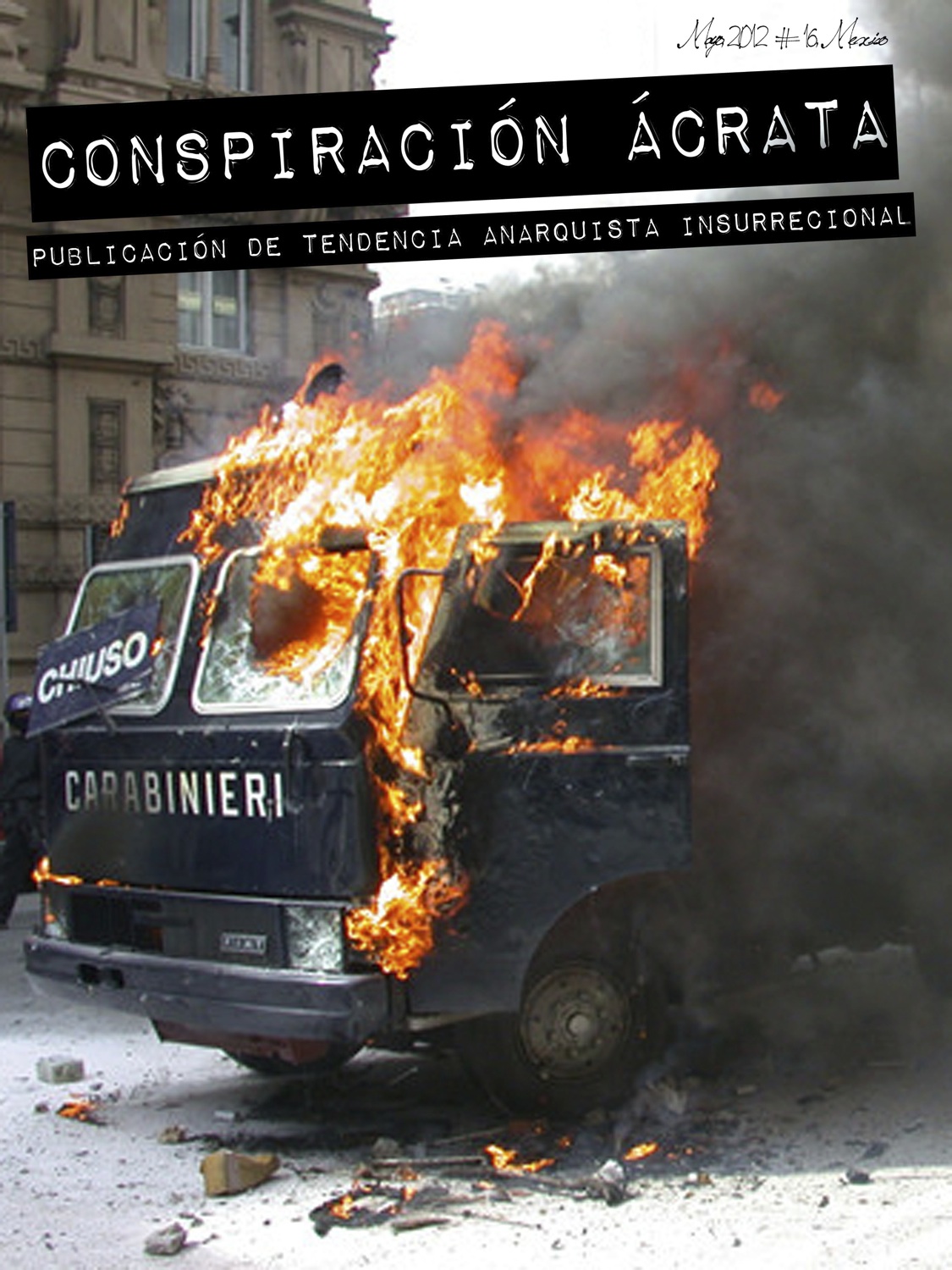

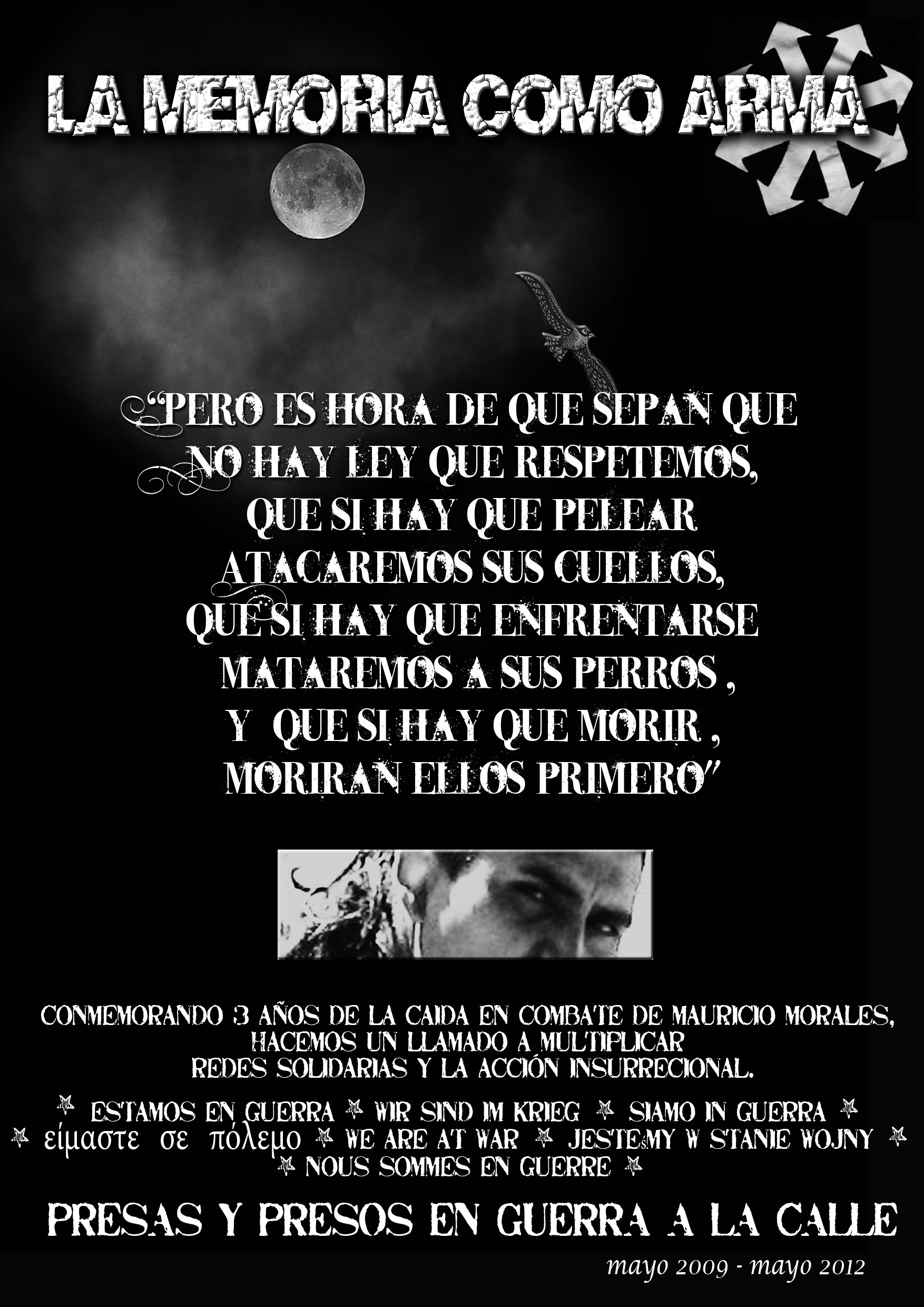
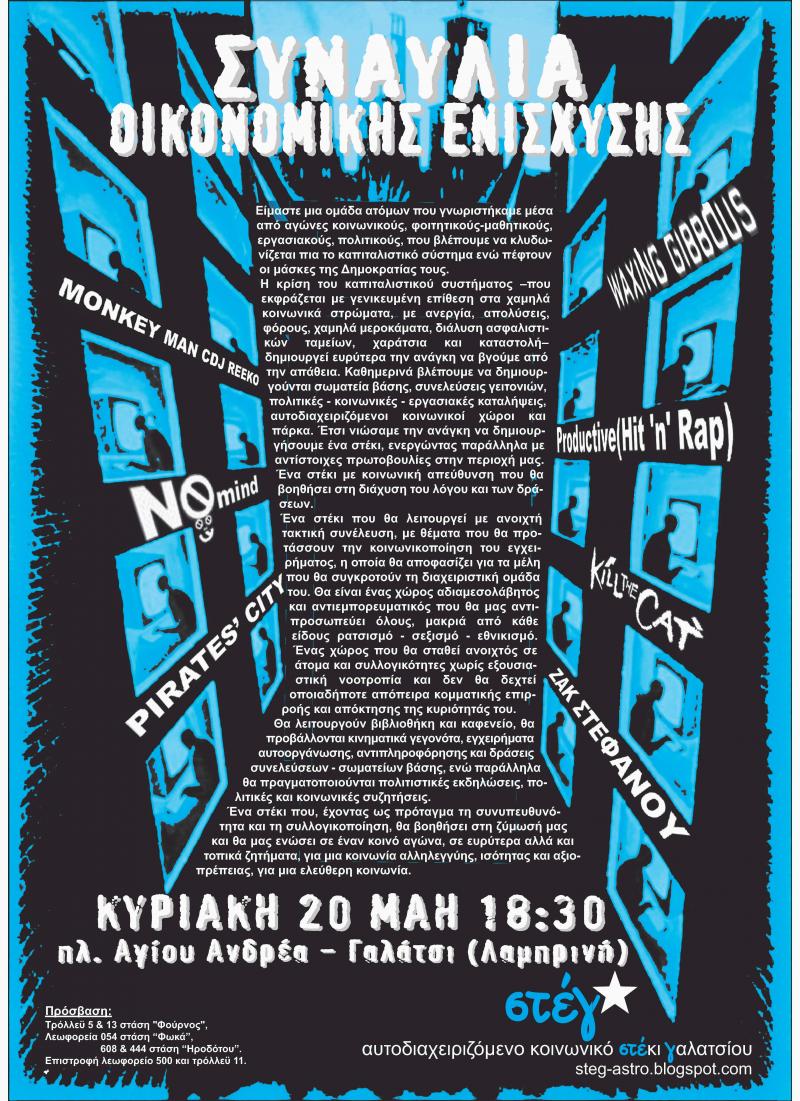








Nessun commento:
Posta un commento